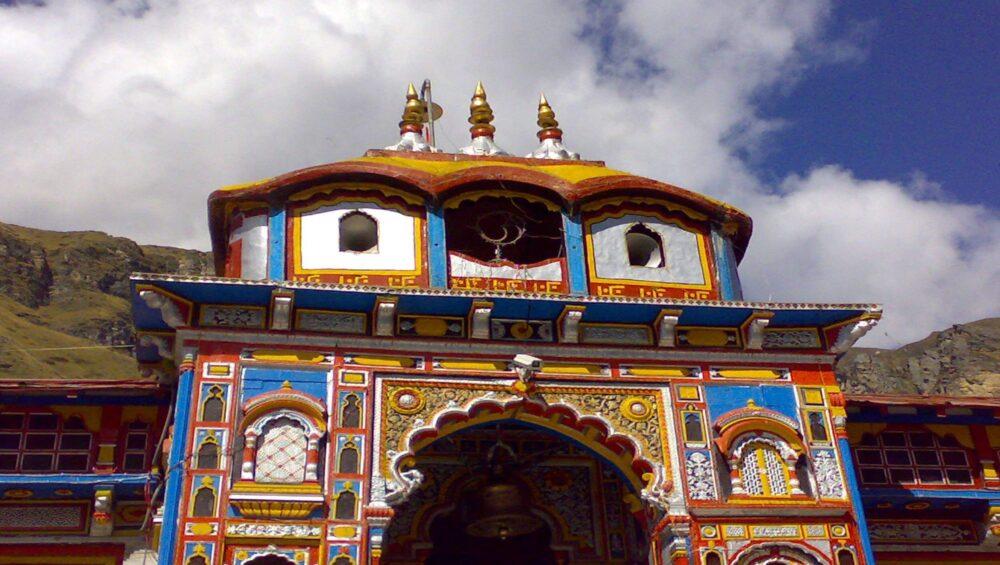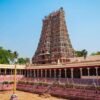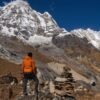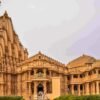Shri Badrinath Dham is one of the Char Dhams in Uttarakhand, the other three being Yamunotri, Gangotri and Kedarnath. It is located in the district of Chamoli, along the banks of the River Alaknanda, between the Nar and Narayana Mountain ranges, at an elevation of 3,133 meters. It is the last holy site to be visited as part of the Char Dham pilgrimage circuit, where Yamunotri is visited first, followed by Gangotri, Kedarnath and finally, Badrinath. The temple is rich in history and legends, and also finds a mention in several ancient scriptures of Hinduism. Shri Badrinath Temple is one of the 108 Divya Desams devoted to Lord Vishnu, who is worshipped here in the form of Lord Badrinath.
Get upto 30℅ of early discount on our Chardham Yatra Tour Packages. Reach us for more details / bookings – +91-7668130655.
History of Shri Badrinath Temple
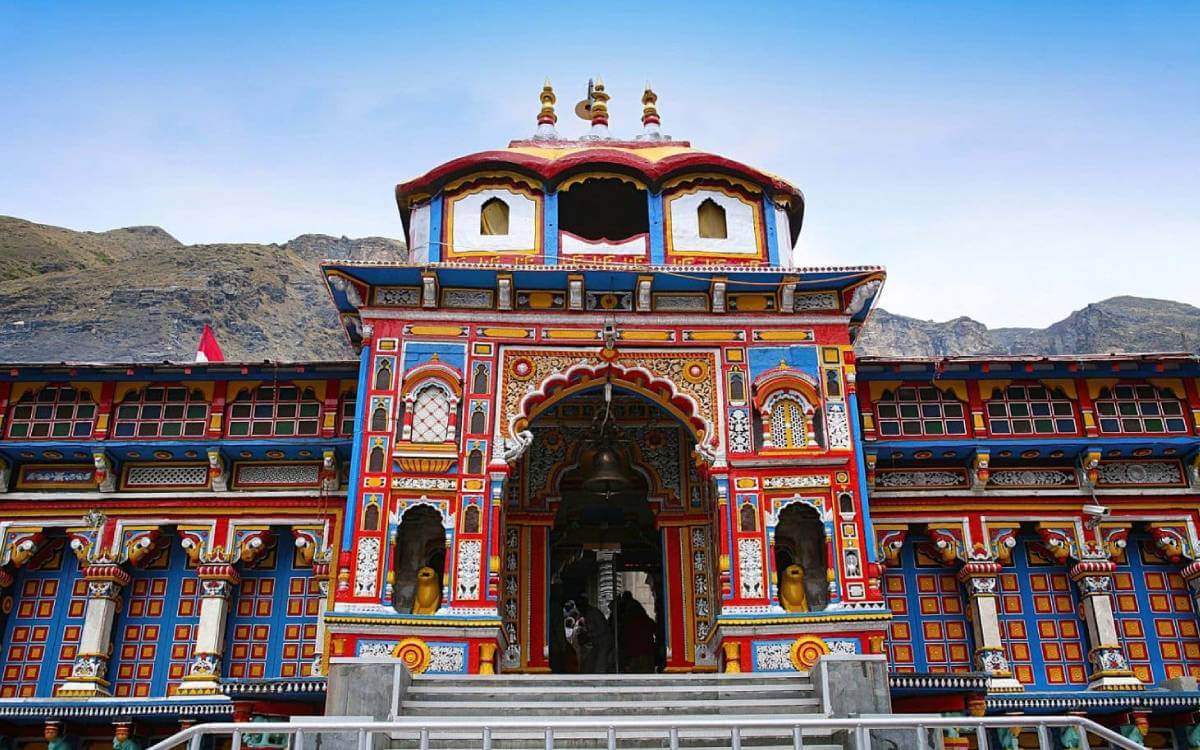
Although no historical records about the Shri Badrinath Dham exist, the temple finds a mention in ancient Hindu religious texts like Vishnu Purana and Skanda Purana. Some accounts suggest that Shri Badrinath Temple was a Buddhist shrine till the 8th century. It was the famous Indian philosopher and theologian who converted the Buddhist shrine into a Hindu temple. According to other accounts, Shri Badrinath Dham was established as a pilgrimage site by Adi Shankaracharya in the 9th century.
It is believed that Adi Shankaracharya left his own followers to take charge of the temple affairs including conducting the rituals and prayers. The descendants of those families, known as Nambudiris today, are the priests of the temple. The head priest or Rawal of the Badrinath Temple, is a Nambudiri Brahmin from Kerala.
The Badrinath Temple has undergone several renovations over the years, both due to natural causes and the age of the temple itself. The temple was expanded by the Garhwal kings during the 17th century. After the 1803 Himalayan earthquake, which caused enormous damage to the temple, it was rebuilt by the King of Jaipur. The area around the temple was declared a no construction zone in 2006 to curb illegal encroachment.
Legends Behind Shri Badrinath Temple

Several legends are also associated with the Shri Badrinath Temple. They are all extremely fascinating and highlight its religious and spiritual significance. One of the legends goes like this. Lord Vishnu sat deep in meditation at the same spot where the Badrinath Dham is situated today. He was so lost in meditation that he was unaware of the extremely cold weather. At such a time, his consort, Goddess Laxmi, protected him by assuming the form of a Badri tree, also called India date or jujube. Lord Vishnu, pleased by her devotion, gave the place the name, Badrika Ashram.
Another legend has it that Lord Vishnu was reprimanded by Sage Narada, when he came across Goddess Lakshmi massaging the feet of Lord Vishnu. To atone for his sin, Lord Vishnu made his way to Badrinath, and meditated there for a long time in the padmasana posture. Today, there is a 1 feet black granite deity of Lord Vishnu housed in a gold canopy under a badri tree. The deity is depicted in a padmasana position.
There is yet another legend associated with Shri Badrinath Dham, according to which, Nar and Naryana, the two sons of Dharma, wished to spread their religion by establishing their base in the sacred Himalayas. The legend goes on to say that during their search for a suitable place for their religious mission, they came across the other four Badris of the Panch Badri. These are Bridha Badri, Yog Bhadri, Dhyan badri and Bhavish Badri. At last, they found the hot and cold springs behind the River Alaknanda. They named it Badri Vishal.
Shri Badrinath Dham also finds a mention in the famous Hindu epic, Mahabharata. It is mentioned that the Pandavas passed through Badrinath and the town of Mana, located almost 4 kilometers from Badrinath Dham, during their ascent to heaven.
Shri Badrinath Temple Opening & Closing Dates
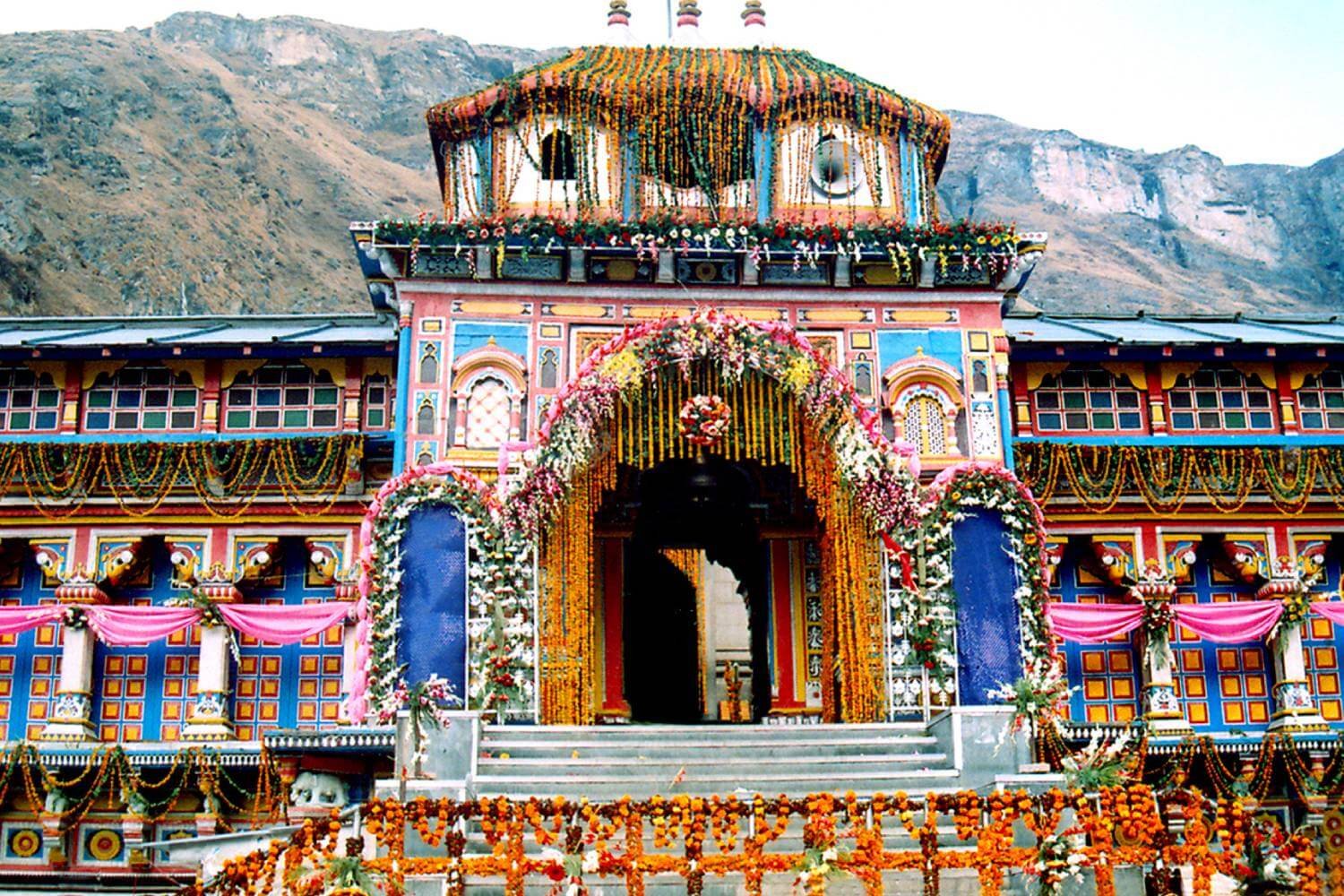
The opening date of the Badrinath Temple is declared on the auspicious occasion of Basant Panchami, while the closing date of the Badrinath Temple is announced on the festival of Vijayadashami or Dussehra. The temple usually opens every year between the months of April to May, and closes by the third week of November. The Badrinath Temple will reopen for Chardham Yatra 2025 in the second week of May.
Badrinath Temple Opening Date – 02 May 2025
The Best Time to Visit Shri Badrinath Yatra

The best time to visit the Badrinath Temple is between the months of April to May, when it is opened to devotees. The months from September to October/November are also a good time to take the Shri Badrinath Darshan Yatra. The monsoon season, which starts from around July and extends to September, is marked by landslides and floods. However, devotees can still visit it during the monsoons.
How to Reach Shri Badrinath Temple?
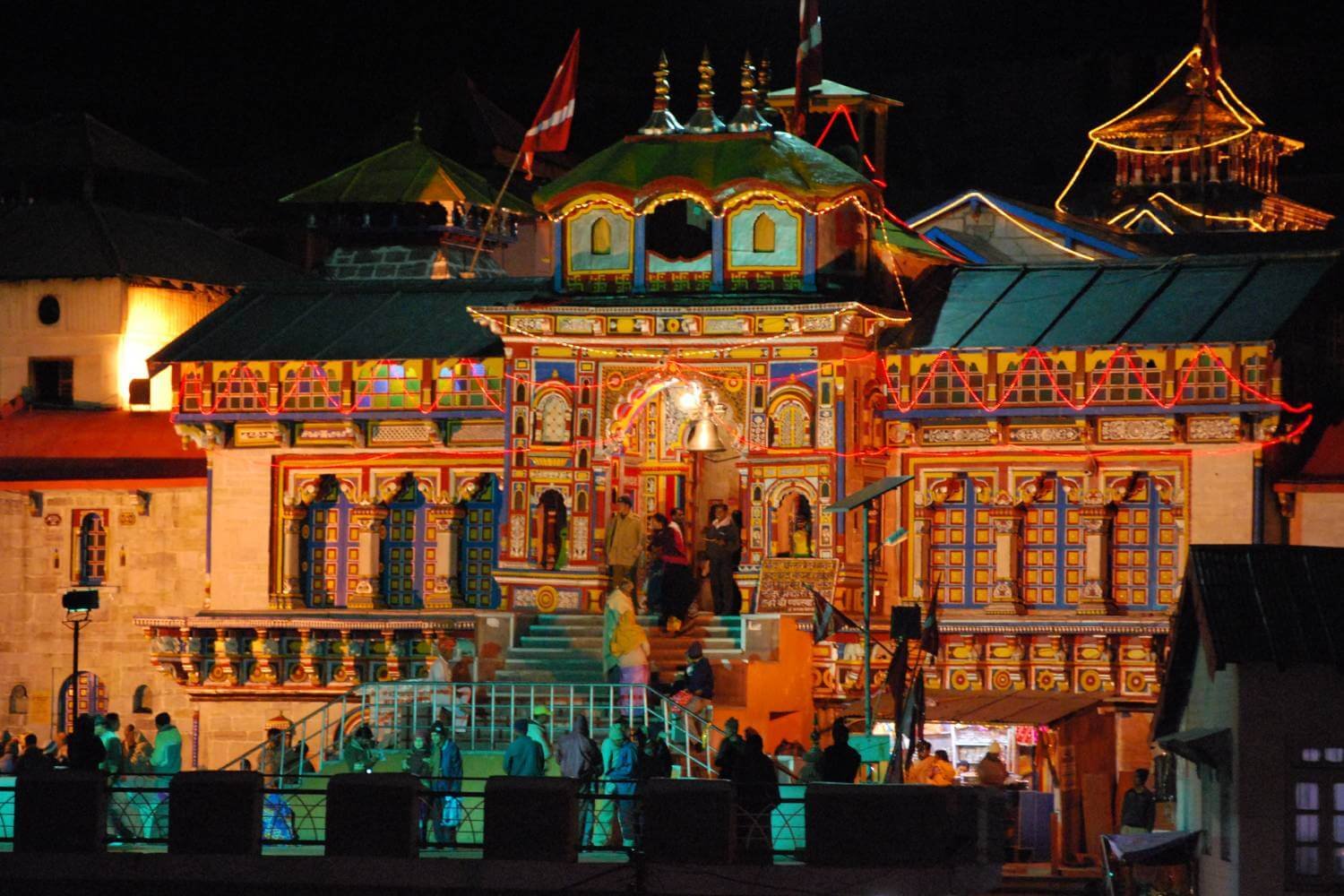
The Shri Badrinath Temple location enjoys air, rail and road connectivity, and can be reached by either of these means of transport.
- By Air: The nearest airport to Badrinath Dham is the Jolly Grant Airport, located almost 314 kilometers away. The airport operates daily flights to Delhi. A motorable road connects the temple to the airport. After arriving at the airport, taxis can be hired till Badrinath Dham.
- By Rail: Rishikesh railway station is the nearest railway station to Badrinath Temple. It is situated at a distance of almost 295 kilometers on NH 58. A well-developed railway network connects Rishikesh to all the major destinations of India. Badrinath is connected to Rishikesh via a motorable road. Taxis and buses are available from Rishikesh, Joshimath (44.2 kilometers approx), Chamoli (141.7 kilometers approx) and other destinations in Uttarakhand.
- By Road: Badrinath is connected by motorable roads to various famous destinations of Uttarakhand including Haridwar, Dehradun, Pauri, Rishikesh, Karnaprayag, Rudraprayag, Ukhimath and Chamoli. Badrinath is also connected to Ghaziabad via NH 58. The route from Haridwar to Rishikesh is as follows:
Haridwar – Rishikesh – Deoprayag – Kirtinagar – Shrinagar – Rudraprayag – Gauchar – Karnaprayag – Nandprayag – Chamoli – Birahi – Pipalkoti – Garur Ganga – Helang – Joshimath – Vishnuprayag – Govindghat – Pandukeshwar – Hanumanchatti – Badrinath.
Shri Badrinath Dham Yatra By Helicopter
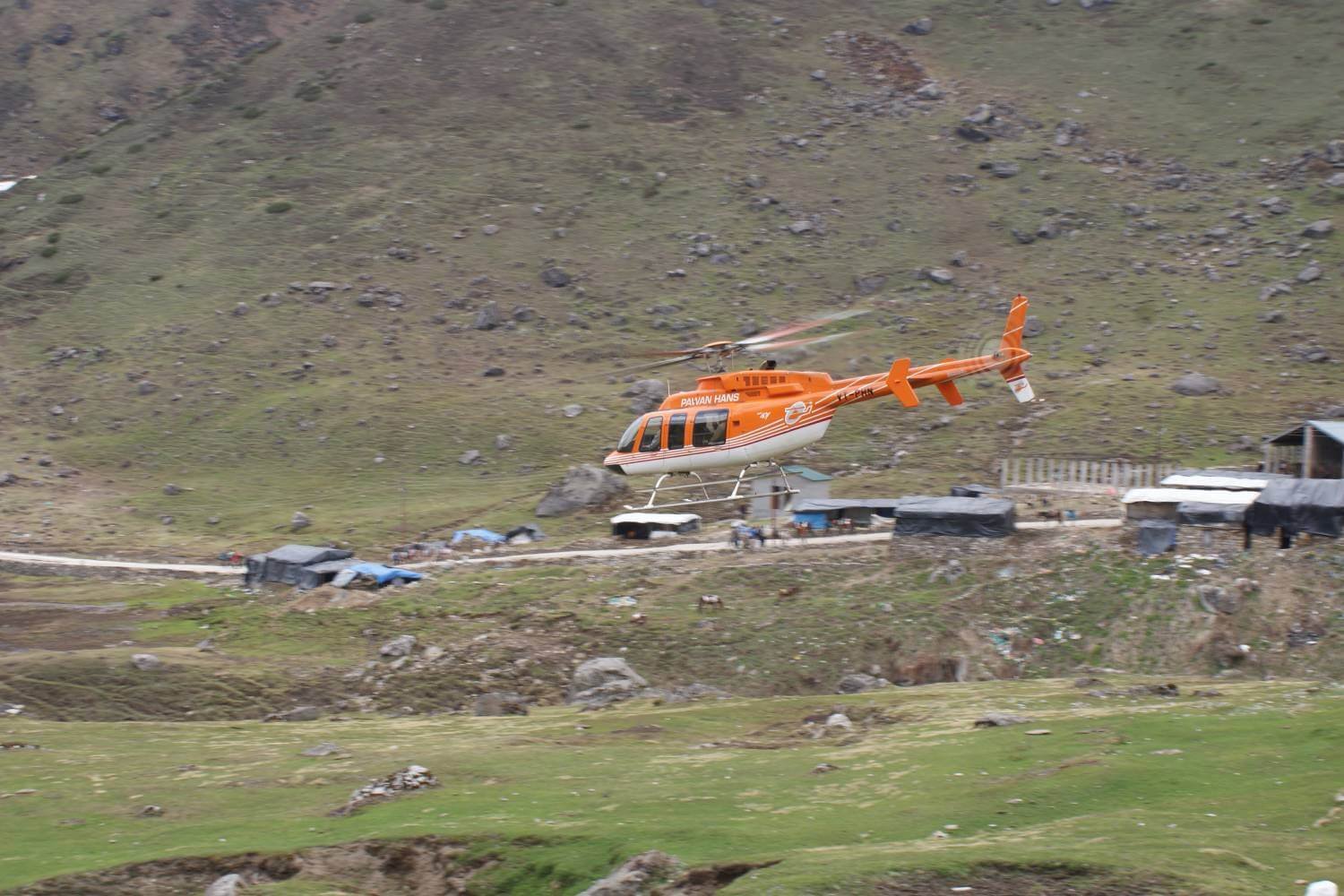
Helicopter services are available to Shri Badrinath Dham, which are operated by Uttarakhand government as well as private heli operators. It should be noted that the heli services offered by the Uttarakhand government are available only to Kedarnath. To avail heli services for the other three Dhams, you need to book private heli services.
Weather in Shri Badrinath Dham
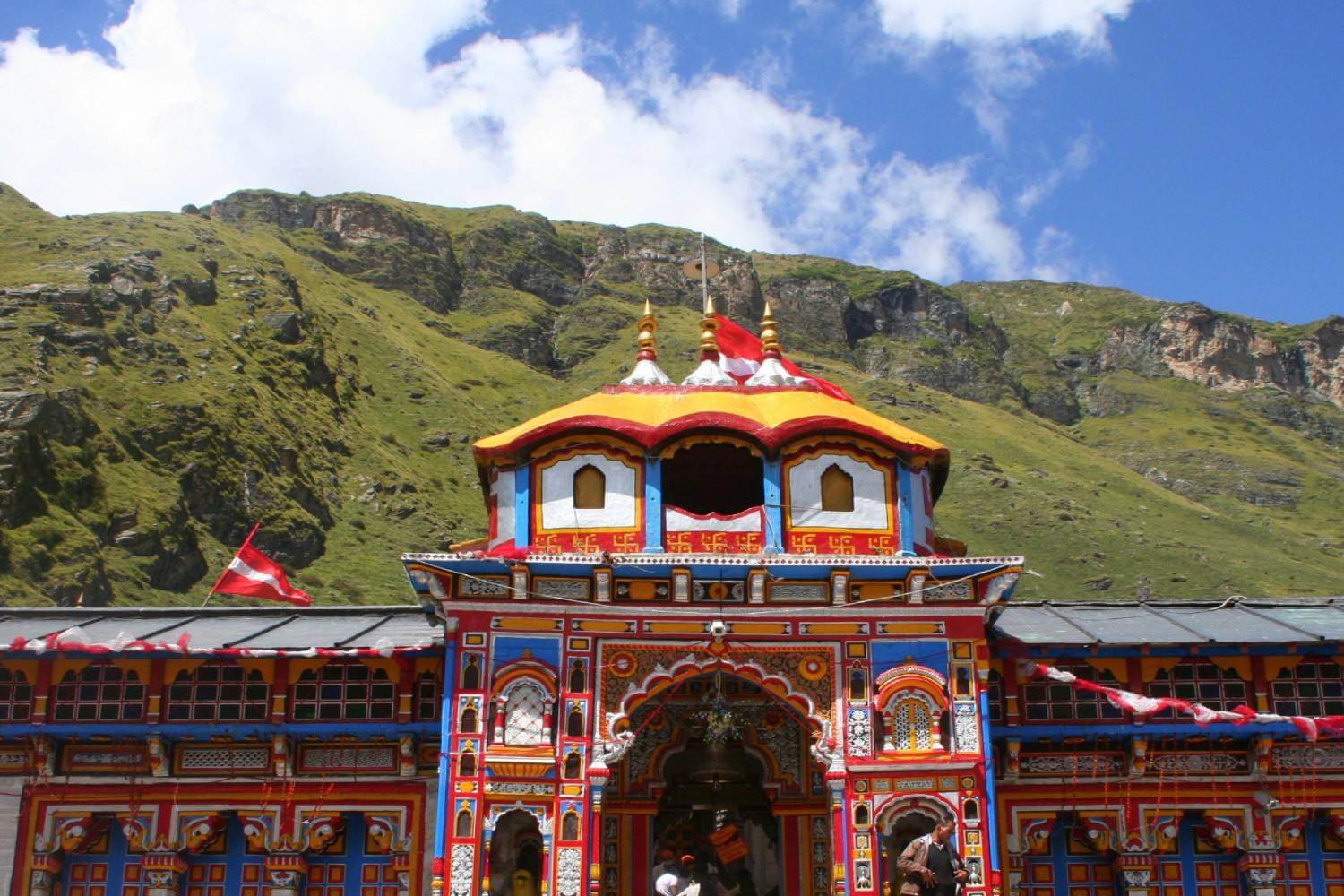
Shri Badrinath Dham is situated at an elevation of almost 3,133 meters, so the weather is cold throughout the year, even during the summer season. The summer season begins from the month of May and continues till the month of June. Although it is quite cold, as the temperature ranges between 7°C to 18°C, it is not uncomfortably cold.
The monsoon season begins from the month of July and lasts till the month of September. This season is marked by landslides and floods, although Badrinath Dham can be visited safely even during this time.
During the winter season, which begins in the month of October, the temperature falls as low as 5°C. As winter progresses, there is heavy snowfall and subzero temperature. Finally, the temple is closed to devotees by the third week of November.
Best Places to Visit in and around Badrinath Dham
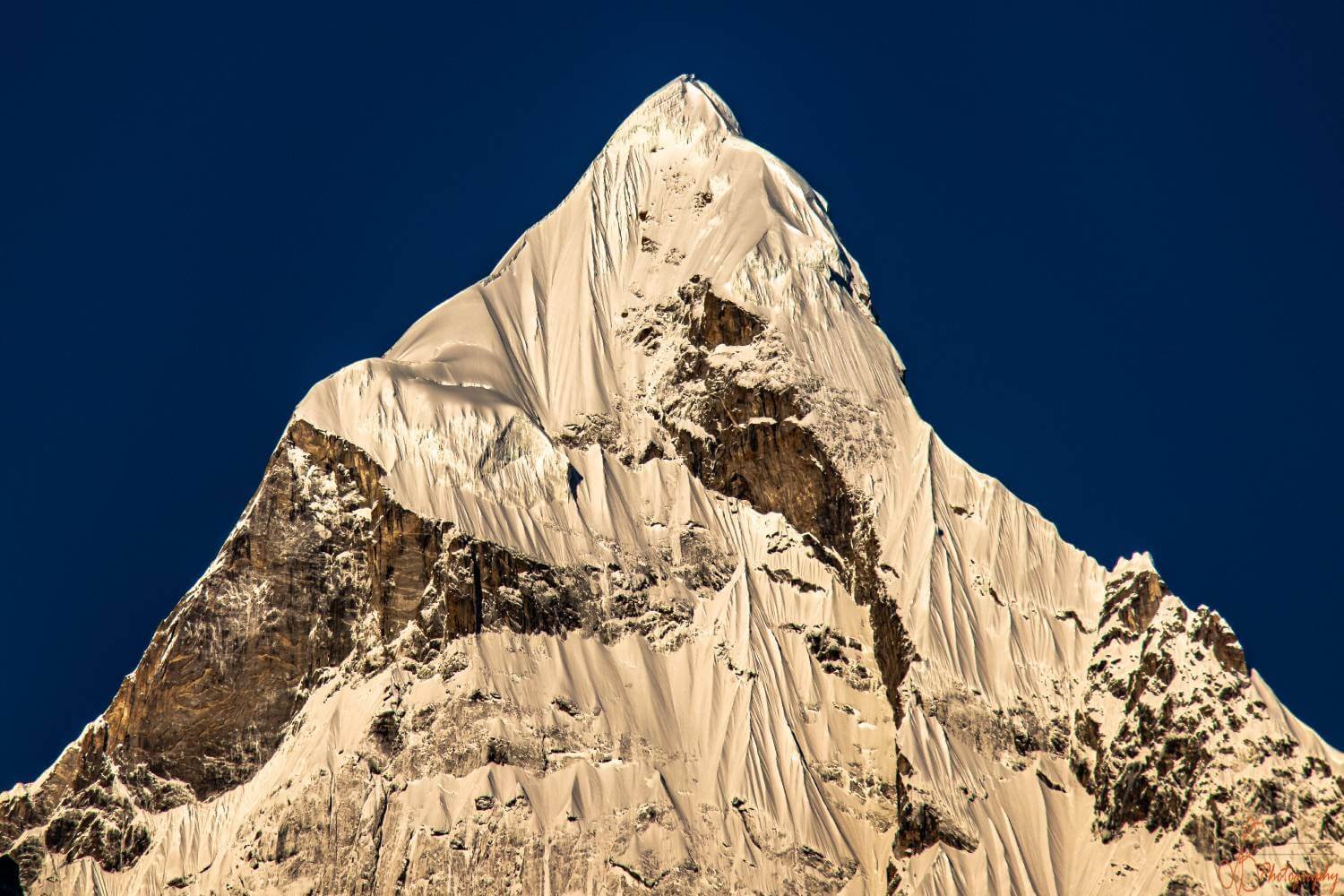
Although Shri Badrinath Dham is in itself the major attraction of devotees and tourists, since it’s a part of the Char Dham, there are other attractions both inside and around the Badrinath Dham.
- Badrinath Temple: Shri Badrinath Temple is the major attraction in Badrinath, as it is one of the four Char Dhams in Uttarakhand. It’s also one of the 108 Divya Desams where Lord Vishnu is worshipped in the form of Badrinath. Badrinath Dham was established by Adi Shankaracharya.
- Ganesha Cave: Located about 4.5 kilometers from the Badrinath Dham, the Ganesha Cave is dark, alluring and mysterious. It is believed that Lord Ganesha wrote the epic Mahabharata in this cave.
- Neelkanth Peak: Neelkanth Peak is a sight to behold in the early morning when the first rays of the sun settle graciously on its majestic peaks. At an elevation of 6,597 meters, it complements the spiritual experience at Badrinath, lending it a timeless aura.
- Tapt Kund: Tapt Kund is located just 4 minutes away from Badrinath Temple. It is a thermal hot water spring whose waters are said to possess therapeutic properties. The water in the springs has a steady temperature of 45℃.
- Vasudhara Falls: Vasudhara Falls, located about 9 kilometers from Badrinath Dham, are a sight to behold as the waters descend from an incredible height of almost 122 meters. It can be reached by covering 3 kilometers approx. till the Mana village by road, and the remaining 6 kilometers on foot.
- Mata Murti Temple: Mata Murti Temple is located about 3 kilometers from Badrinath Temple. It’s located on the right bank of the River Alaknanda. A fair called Mata Murti ka Mela is held every year in September, and is visited by a large number of devotees.
- Charan Paduka: Charan Paduka is located about 3 kilometers from the main town of Badrinath, and can be reached by a steep climb. It’s a rock believed to contain the imprints of Lord Vishnu, when he descended on Earth from Vaikunth (his heavenly abode).
- Vyas Cave: Vyas Cave is located at a distance of almost 4.6 kilometers from Shri Badrinath Temple. This is believed to be the cave where Sage Ved Vyas composed the Hindu epic, Mahabharata along with Lord Ganesha.
Also Check Out: Popular India Tours | Tour Packages | International Tour Packages
Explore Popular Destination Tourism Packages
- Uttarakhand Tour Packages
- Himachal Tour Packages
- Sikkim Tour Packages
- Kashmir Tour Packages
- Ladakh Tour Packages
- Andaman Tour Packages
- Kerala Tour Packages
- Gujarat Tour Packages
- Rajasthan Tour Packages
Other Informative Blogs to Read
- Shri Kedarnath Dham Temple Information
- Best Places to Visit in Chopta Tungnath
- 5 Top Adventure Tourism Sports in India That Should Be on Your List
- Heritage Tourism in India
- Best Places to Visit in India
- Best Places to Explore in Himachal
- Best Weekend Destinations from Delhi
- Best Places to Visit in Uttarakhand
- Popular Pilgrimage Tourist Destinations in India
- Best Places to Visit in Haridwar
- Best Places to Visit in Jammu & Kashmir
- Uttarkashi Tourism: Best Places to Visit in Uttarkashi
- Harsil Tourism: Best Places to Explore & Top Things to Do
- Chardham Yatra Uttarakhand Himalayas
- Best Honeymoon Destinations in India
- Best Deals & Discounts on Popular Weekend Tour Packages
- Must Visit Beaches in India
- Gujarat Launches Intrastate Flight Service from Surat
- Best Places to Visit in Madhya Pradesh
Summer Travel Related Blogs to Read
- Best Summer Hill Stations in India
- Top National Parks to Visit in Summers in India
- Best Treks to Do in Uttarakhand in Summer
Winter Travel Related Blogs to Read
Wildlife Travel Blogs to Read
- Wildlife Tourism in India
- Jim Corbett National Park Uttarakhand
- Ranthambore National Park Rajasthan
- Panna National Park Madhya Pradesh
- Kaziranga National Park Assam
- Bandhavgarh National Park Madhya Pradesh
- Kanha National Park Madhya Pradesh
- Famous National Parks in India
- Best Places to Visit Near Kaziranga National Park in Assam
Other Informative Trekking Travel Blogs to Read
- Best Trekking Places in India
- Best Trekking Destinations in Uttarakhand
- Best Trekking Destinations in Himachal

